Series: Upgrading your Content DB to SharePoint 2010
- Upgrading your Content DB to SharePoint 2010 – Part 1, The preupgradecheck
- Upgrading your Content Database to SharePoint 2010 – Part 2, the Database Attach method
I’m sure there are a lot of SharePointers out there who are excited about the 2010 release and as I have been working my way through the installation and configuration of this updated beast, I have also been providing you with posts along the way sharing my experiences.” Today isn’t any different, and in this two part series I will be providing you with a guide to upgrading your SharePoint 2007 content databases to SharePoint 2010.” There are already some great resources out there regarding upgrade options and preparation guidance including those from Microsoft on the TechNet Site and others which I will list at the end of this article. The prime focus of part 1 of this 2 part series will be to outline the many tools that are available to you at no cost, assisting and ensuring that your SharePoint” farm and SharePoint databases are up to scratch and ready for 2010.” The series will proceed as follows;
- Upgrading your Content DB to SharePoint 2010 -The preupgradecheck
- Upgrading your Content DB to SharePoint 2010 – Using the Database Attach method
First and foremost, Microsoft have provided us with the pre-upgrade command line stsadm parameter switch in SharePoint 2007 Service Pack 2, which has been further updated with the latest October 2009 Cumulative Update (CU),. This will be our primary analysis and reporting tool providing us with invaluable information regarding your SharePoint 2007 farm and actions that may be required to be taken prior to upgrading to SharePoint 2010, so let’s begin our journey here.
Launch a Windows command prompt on your SharePoint Server and type the following stsadm command from the following directory;
%COMMONPROGRAMFILES%\Microsoft Shared\Web Server Extensions\bin stsadm.exe -o preupgradecheck |
This will begin the pre-upgrade process checks which will display the relevant steps in your command prompt window.

When the pre-upgrade process completes, you will receive the following “Operation completed successfully” message in which it will then launch your web browser displaying the results in HTML format, titled “SharePoint Products and Technologies Pre-Upgrade Check Report”.” These results can also be located under the following location;
%COMMONPROGRAMFILES%\Microsoft Shared\Web Server Extensions\12\Logs\

What you will notice is that the report being displayed does a great job in not only notifying you of any issues regarding your SharePoint farm such as missing Site Definition Information or missing Feature Information, but it also provides you with a blueprint of your SharePoint Farm setup. Such useful information which will be required to be taken into consideration when upgrading to SharePoint 2010 includes the following items;
- Search content sources and start addresses
- Office Server Search topology
- Servers in the current farm
- SharePoint version and list of components running in the farm
- Supported upgrade types (Inplace Upgrade and Content Database Attach)
- Site Definition and Feature Information
- Language pack information
- Alternate Access Mappings (AAM) that will need to be recreated
- Customized List views (these will not be upgraded)
- Customized field types (these will not be upgraded)
- WSS Search topology
- List of Content Databases and SQL server location
Joel Oleson does a great job in explaining these items in great detail in his blog post Preparing for Upgrade to 2010 Today – Part 1 Preupgradecheck, however I will outline some of the issues that I personally encountered with my SharePoint 2007 content database.
The majority of your issues will most likely evolve around Missing Site Definition and or missing Feature Information.” These missing items are listed at the bottom of each of these respective sections in the pre-upgrade report.” My first problem area was a missing Site Definition.

name = Unknown, language = 1033, template id = 75816, count = 5, status = Missing
Notice that the name of this feature is” “unknown”, which isn’t of much help, however this is where Google (or your preferred search engine provider) comes into play.” The key identifier is the template id which in this case is 75816, and after typing this ID number in my search criteria I was immediately presented with a number of results all pointing to the Help Desk Fab 40 template.” Aha! my eyes lit up and I recall back in the day installing some of the Fab 40 templates (I’m sure many did at the time of release).” So I downloaded the solution from the Microsoft Download Center and re-installed the template. I then re-ran the preupgradecheck and whalla! my missing site definition now has a name against it with a status of “Installed”.

My next problematic area was a plethora of missing features. Now this will all depend on how much history is attached against your current SharePoint farm environment and how many 3rd party solutions and or custom development have been installed or uninstalled over time.
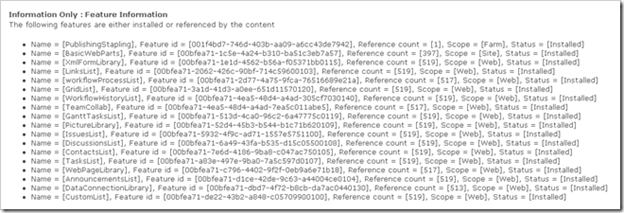
One thing you will learn throughout this process is that the preupgradecheck utility does a great job in naming features against GUID’s when they are installed, but fails miserably in displaying names when they are missing.” Once again, Google quickly becomes a point of reference and 9 times out of 10, utilizing the GUID in your search criteria will yield the results that you are after, and that is the actual name of the missing feature.”” A few of mine were features from the Codeplex site so I was easily able to identify whether I needed to re-install or remove these rogue items.” In most instances, if they are missing, they are missing due to failed uninstalls, so this is where the stsadm becomes your next best friend.
Let’s take a single example where the following GUID was listed as being missing; 758a6fdf-005a-bcaa-0ea0-1d4931979fec.” You will need to run the following stsadm -o deactivatefeature command to remove the rogue entry.” More information on this command can be located in the following TechNet article.
STSADM -o deactivatefeature -id 758a6fdf-005a-bcaa-0ea0-1d4931979fec -url http://intranet.allthefixes.com -force |
In addition to the STSADM command line tool, there are a couple of other tools that really assisted with the process of removing rogue features where the stsadm actually failed.” The first tool which is provided by Gilham Consulting , is the WssAnalyzeFeatures tool, which will assist in listing features against their GUID similar to that of the preupgrade report.

The second tool required as part of the removal process is the WssRemoveFeatureFromSite which will remove rogue features installed in your SharePoint farm where the stsadm -o deactivate feature might fail.” Eventually you would want the output of the WssAnalyzeFeatures command to display no problems.

So after re-installing or removing any rogue features and site definitions we should be ready to proceed with our SharePoint 2010 upgrade, taking into account that there were no other problematic areas that were outlined in the preupgradecheck.
There are several other tools worth mentioning that also assisted with outputting information and configuration details of my farm and assisted with the SharePoint farm cleansing process.
The SharePoint Feature Administration and Clean Up Tool which you can download from the Codeplex site,” does a great job in listing Feature Definitions across Site Collections and Sub Webs and cleanly uninstalling them.” My favorite feature in this tool is its ability to locate any faulty features and then providing you with the ability to remove them from your entire farm.
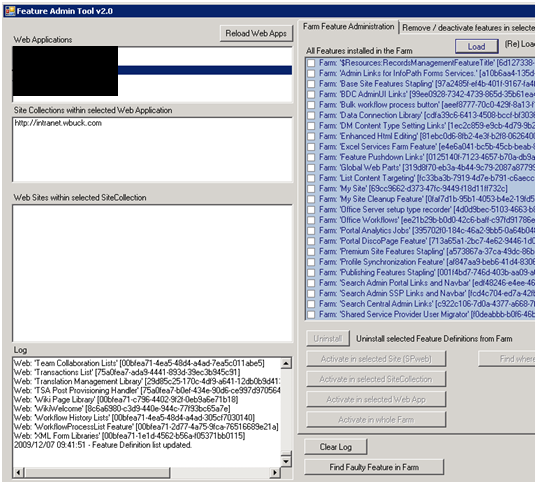
Clicking on the Find Faulty Feature in Farm should hopefully return the following “No Faulty Feature was found” message.
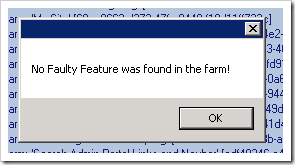
SharePoint Manager 2007 (note there is already a SharePoint Manager 2010 available) can also be downloaded from the CodePlex Site and is a great tool for administrators and developers in providing an understanding of any SharePoint farm topology.
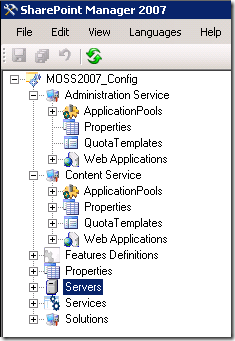
My last tool of choice is from Bamboo Solutions, namely the Bamboo SharePoint Analyzer.” Similar to that of SharePoint Manager 2007, this utility also does a great job is listing everything you need to know about your SharePoint environment and your entire farm topology.” This is also available as a free download and should be installed as part of any SharePoint Farm deployment.” These tools will also greatly assist in replicating your environment for your SharePoint 2010 deployment.
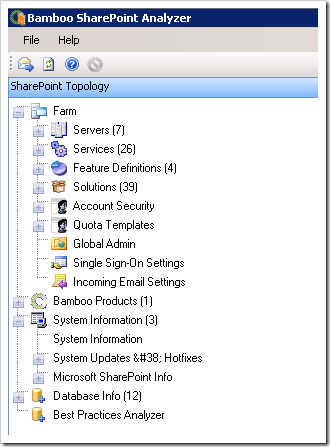
Hopefully I have provided you with a comprehensive list of tools and tips to assist you in getting your Content DB’s primed for your SharePoint 2010 upgrade.” In the next part of this series I will focus on the actual upgrade itself utilizing the Database attach method, so stay tuned!
References:
Upgrading to SharePoint Server 2010 – TechNet
Run the pre-upgrade checker (SharePoint Server 2010) – TechNet
5 Reasons SharePoint 2010 PreUpgradeCheck is better than Prescan – SharePoint Joel
Preparing for Upgrade to 2010 Today – Part 1 Preupgradecheck – SharePoint Joel
Planning for SharePoint 2010 – Upgrade Planning Part 4 – Using preupgradecheck – Chandima.Net
